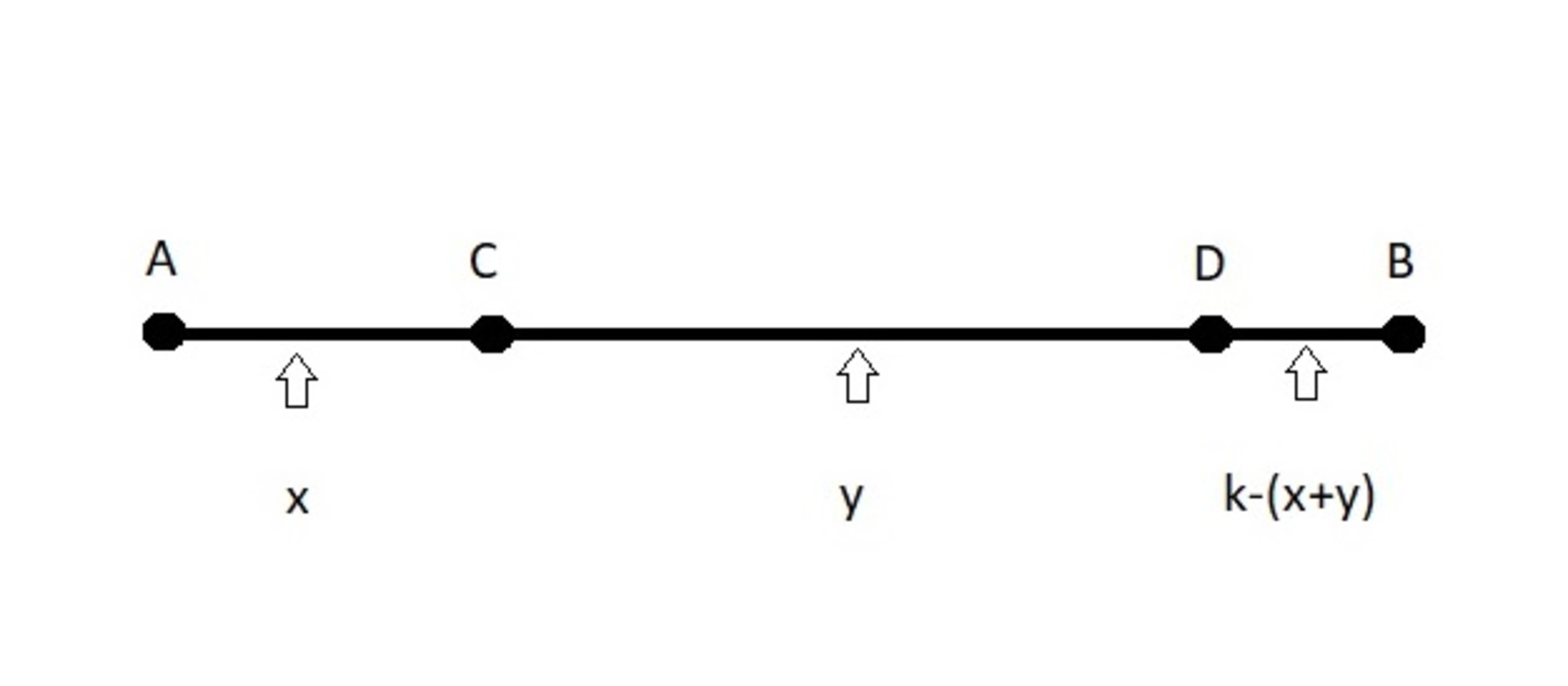Points randomly chosen on a segment.

Let us consider a segment of of a given length where is an arbitrary positive number. We pick two points and on the segment randomly, so that they divide the given segment into three shorter segments of positive length. What is the probability that the three shorter segments can be used to form a triangle?
Note: This problem -that was suggested to me by my nephew Joey- is not intended to be original.
The answer is 0.25.
This section requires Javascript.
You are seeing this because something didn't load right. We suggest you, (a) try
refreshing the page, (b) enabling javascript if it is disabled on your browser and,
finally, (c)
loading the
non-javascript version of this page
. We're sorry about the hassle.
Let x and y be the length of two of the three shorter segments. Obviously, the regions of all possible pairs ( x , y ) is P = { ( x , y ) ∣ x > 0 , y > 0 , x + y < k } . From the triangle inequality, we can get that the region of all pairs ( x , y ) , such that the segments of length x , y , and k − x − y can be used to form a triangle is E = { ( x , y ) ∣ x < k / 2 , y < k / 2 , x + y > k / 2 } . Then the probability that we are finding is p = a r e a ( P ) a r e a ( E ) = k 2 / 2 k 2 / 8 = 1 / 4 = 0 . 2 5